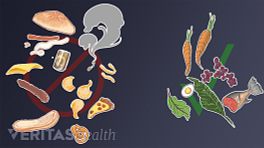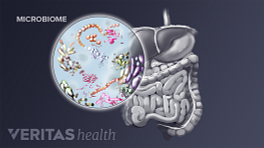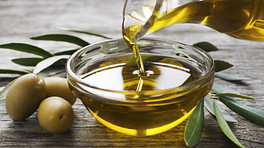A number of therapies commonly incorporated into an integrative treatment plan for arthritis include diet modifications, nutrition, and supplements.
In This Article:
- Integrative Medicine for Arthritis Pain Relief
- Acupuncture and Reiki Healing for Arthritis
- Integrative Arthritis Therapies and Nutrition
- Manual Therapies for Arthritis Pain
- Tai Chi and Yoga for Arthritis
Anti-inflammatory Diet
Inflammation is essential to the immune system, but it is also at the root of most types of arthritis pain. For arthritis patients, the goal of an anti-inflammatory diet is to reduce unnecessary inflammation that leads to joint degeneration and pain.
See How Arthritis Causes Joint Pain
An anti-inflammatory diet:
- Eliminates foods that may facilitate inflammation, such as processed foods, fried foods, red meat, and refined sugar products
- Encourages eating foods thought to combat inflammation, including vegetables, fruits, and foods high in Omega-3 fatty acids, such as seafood.
All anti-inflammatory diets eschew processed and sugary foods for high-fiber, whole foods; however, there is no singular anti-inflammatory diet that works for everyone. For example, some people report that dairy products, gluten, or nightshade vegetables—such as potatoes, tomatoes, and eggplant—exacerbate joint pain while others do not.
Dietary Supplements
Alternative treatments for arthritis include the use of dietary supplements, such as vitamins, minerals, herbs, and probiotics.
See Magnesium, Melatonin, and Probiotics for Fibromyalgia
Some of the most-researched supplements include glucosamine and chondroitin sulfate, ginger, turmeric (curcumin), and fish oil. These dietary supplements are safe for most people but can cause negative side effects in people with certain medical conditions, medications, or dietary restrictions. People are advised to talk to their doctors about specific supplements before taking them.
Capsaicin (Capsicum Frutescens)
Applied topically as a cream, gel or patch, capsaicin is used to relieve pain in people with osteoarthritis, rheumatoid arthritis, and other painful musculoskeletal conditions. 1 Laslett LL, Jones G. Capsaicin for osteoarthritis pain. Prog Drug Res. 2014;68:277-91. Review. PubMed PMID: 24941673. , 2 Stanos SP, Galluzzi KE. Topical therapies in the management of chronic pain. Postgrad Med. 2013 Jul;125(4 Suppl 1):25-33. Review. PubMed PMID: 24547601. Capsaicin is derived from chili peppers and provides a heating sensation on the skin that interrupts pain signals to the brain.
See Capsaicin Cream for Joint Pain
These creams are sold over the counter under different brand names, including Zostrix and Capsazin.
Watch: Video: Reduce Arthritis Inflammation with this Homemade Cream











